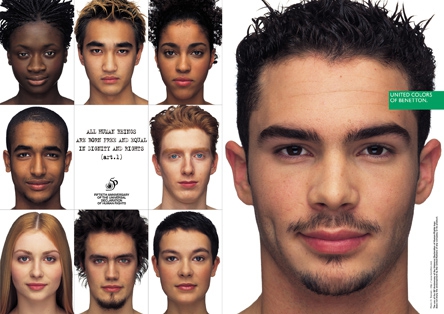As I discussed in the previous article, God is speaking to himself in this verse, so the image/likeness being discussed is God’s image/likeness. But the God of the OT is not supposed to have an image. In fact, there is a commandment expressly forbidding the creation of any images of God. How do we explain this seeming contradiction?
One theory that has been proposed is that humans resemble God in a way other than physical form: a spiritual quality (the soul), self-consciousness, intellect, or reason. This was a popular theory in early Christianity, operating under the Greek idea of a duality between body and spirit. Humans could not resemble God by virtue of our bodies – because God is pure spirit – but we are the image of God in terms of our spiritual nature. The problem with this theory is that the Hebrew understanding of human nature was unitary; body and spirit are one.
A clue to what the author intended can be found in the following verse, 1:27:
And God created the human in his image,Even in translation, there is a clear parallelism between “image of God” in line 2 and “male and female” in line 3. Are we supposed to interpret “male and female” as a metaphor for the image of God? Perhaps the relationship between men and women is analogous to the relationship between God and humanity. But if that is the case, then the image of God must be located in human interactions or in humanity as a whole and not in an individual man or woman.
In the image of God he created it;
Male and female he created them.
Does a study of the words involved provide a clue? The word “image” (tselem) in the OT usually refers to a concrete, physical object, such as a statue or idol. “Likeness” (demut) has a more abstract meaning of “resemblance”. These words are used together (but in opposite order) in Gen 5:3: “[Adam] became the father of a son in his likeness, according to his image, and named him Seth.” The meaning here seems plain: as the son has a resemblance to the father, but is not identical to the father, humans have a resemblance to God but are not identical to God. There certainly does seem to be an implication that a physical resemblance is intended.
Taking this back to 1:26, we have already rejected the notion of a crude physical resemblance between God and human beings. We have also rejected the theory that humans resemble God in some spiritual fashion that does not involve our physical nature. Based on Gen 5:3, some have proposed that, just as Adam and Seth have a relationship, not just a physical resemblance, so do God and human beings. Following this interpretation, God creates a being with whom he can communicate, with whom he can have a relationship. But if this relationship is the “image of God” in which humans are created, that implies a relationship within the Godhead and we’re back to something like the Trinitarian interpretation. While that could be a valid interpretation for us today, it is certainly not what the ancient author intended.
Another proposal is simply translating the Hebrew differently. Instead of reading “let us make human beings in our image,” it should read “let us make human beings as our image.” In the ANE a king would set up a statue of himself and it was believed that statue had a spiritual link with the ruler it represents. Indeed, kings were sometimes referred to as “images” of the gods. Just as the gods ruled over heaven and earth, the king ruled over his kingdom. The king’s authority to rule came from the gods.
 |
| United Colors of Benetton ad (1998) |
 |
| Benetton ad celebrating 50th anniversary of the UN Declaration of Human Rights |
In the Babylonian creation myths, humanity was created by the gods as slaves, to do the menial work the gods did not want to do. Just as with other aspects of Babylonian creation myths, the author of Genesis 1 is intentionally subverting those myths by asserting that humans were not created to be slaves, but were created by God to rule over the earth and the other creatures living on it. For the biblical author, it is not just the king who is created as God’s image, but all of humankind is created as God’s image.
In closing, I will leave you with a couple of verses (vv. 5-6) from Psalm 8. Psalm 8 is something of a biblical commentary on Genesis 1:1-2:3 and totally appropriate to wrap up our discussion:
Yet you have made them [human beings] a little lower than God,
And crowned them with glory and honor.
You have given them dominion over the works of your hands;
You have put all things under their feet. (NRSV)
No comments:
Post a Comment